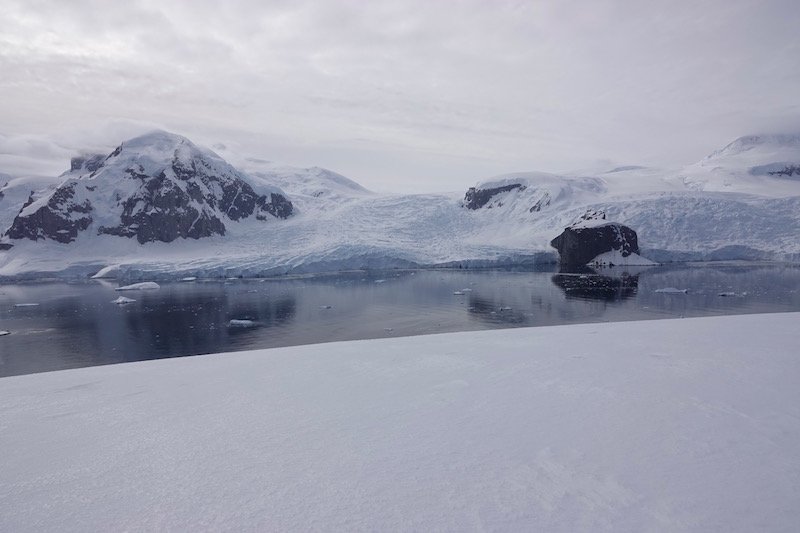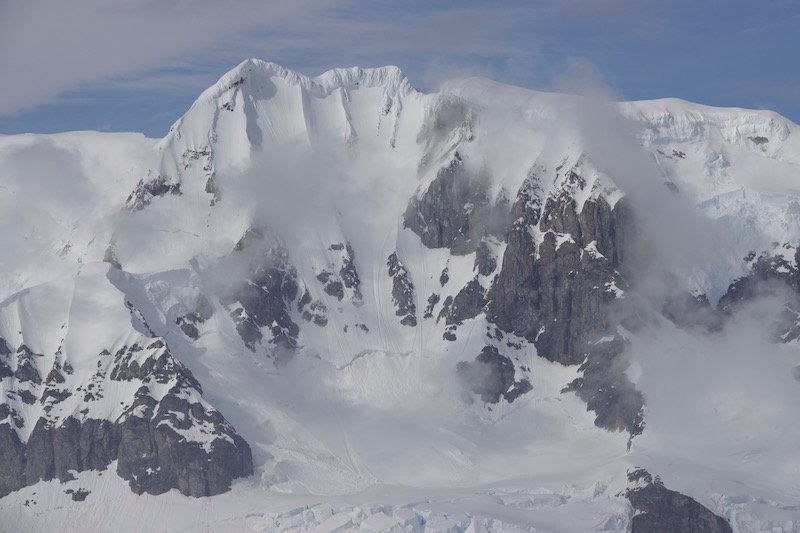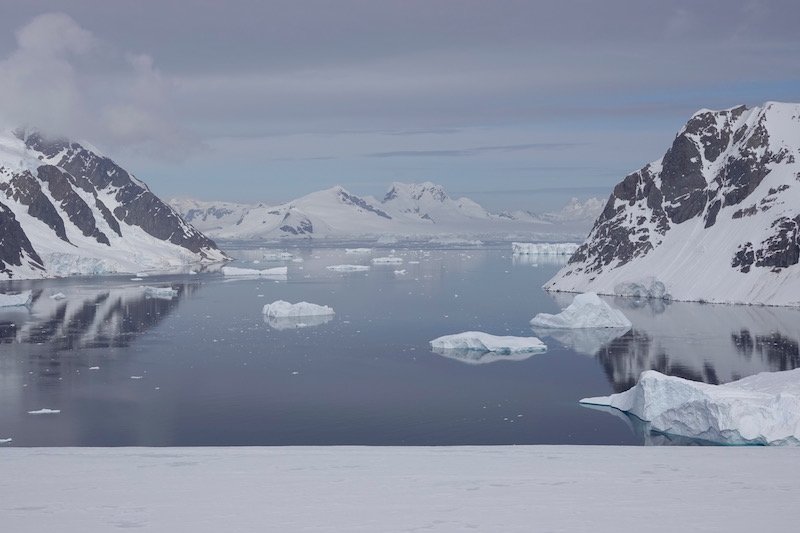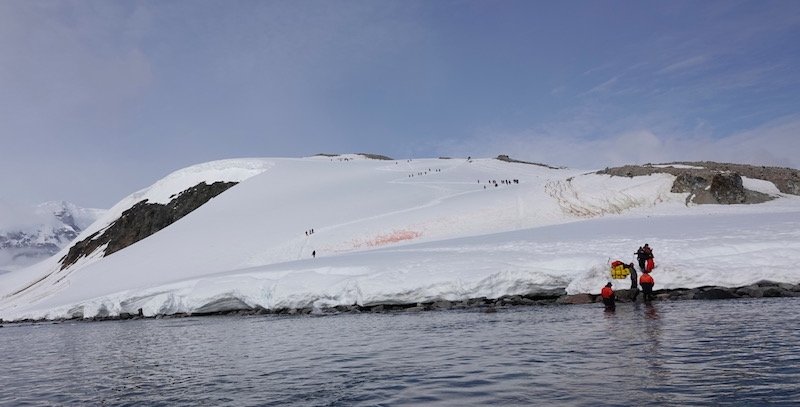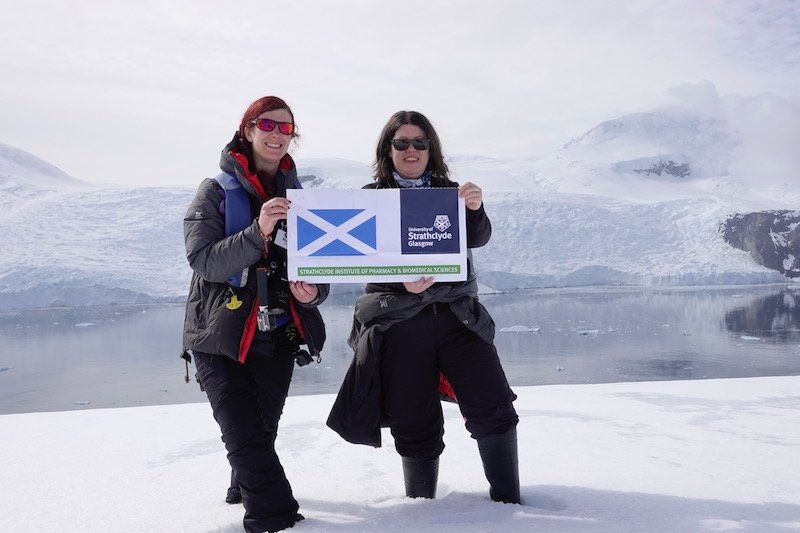We finally get ashore again on Jan 12th. Danko Island is near Cuverville Island where we landed a few days ago and saw Gentoos. It has a steep hill and a few small penguin rookeries. It’s great to walk up the hill where there is a large plateau and stunning views towards the peninsula. Inspired by Christiana Figueres many of us also have a magical silent time, listening to the whales breaching below and the avalanches and the calving glaciers cracking across the water.
On the way up the hill there is a big patch of red snow algae. Snow algae are singled celled algae similar to the ones that cause algal blooms in water. These ones swim in the water that coats the ice crystals within the snow banks. Like algal blooms in lakes and oceans the cells divide when conditions are good and swim off to new territory. They need enough sunlight for photosynthesis and to warm the snow, they also need nutrients which are in ample supply from penguin poo in the vicinity of penguin rookeries.
Snow algae are green algae like Chlamydomonas nivalis but can appear green or red depending on the amount of red carotenoids they produce to protect themselves from too much light (including ultraviolet UV-B). Drs Matt Daveyand Peter Fretwell are using satellites to track these snow algae blooms across Antarctica so if you spot any, take a photo, log the coordinates and send them a message!
It’s a great location for photographs and Rachel Bice is also from Cornwall, where I lived from age 6 to 19 and so we team up for a Kernow flag moment!
The Cornish flag is the flag of Saint Piran, the patron saint of tin-miners. I grew up in tin mining country and the moors where the mining had formerly occurred were great places to search for rose quartz, amethysts and other interesting rocks. Tin was the most important element in the economy of Cornwall but when the mines closed the Cornish took their mining skills all around the world.

